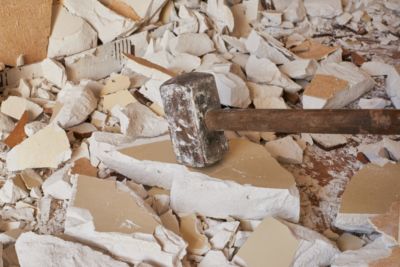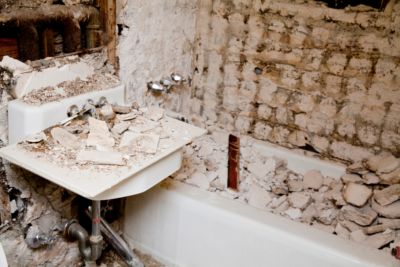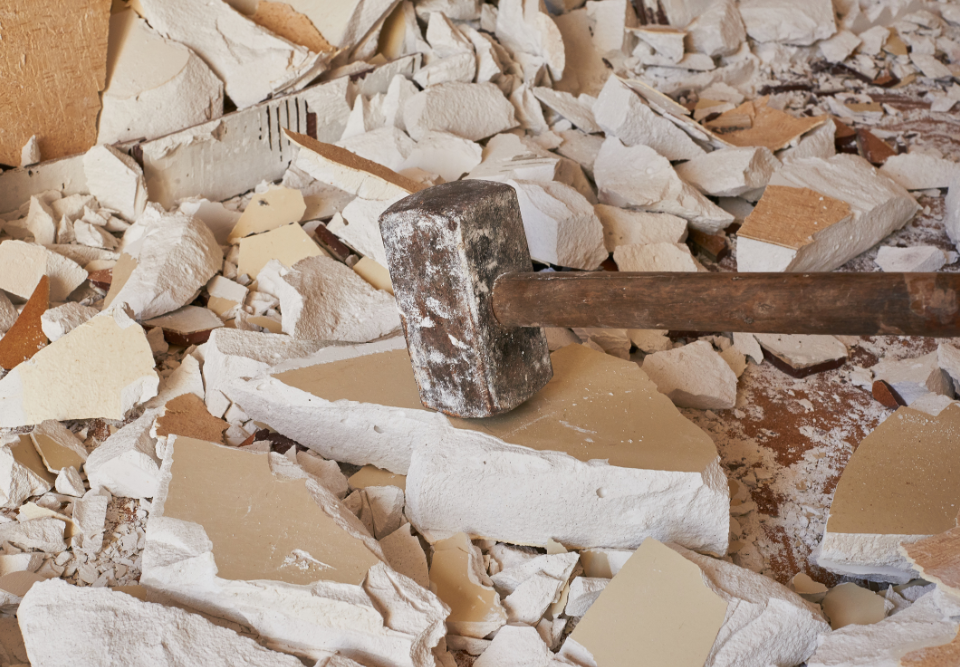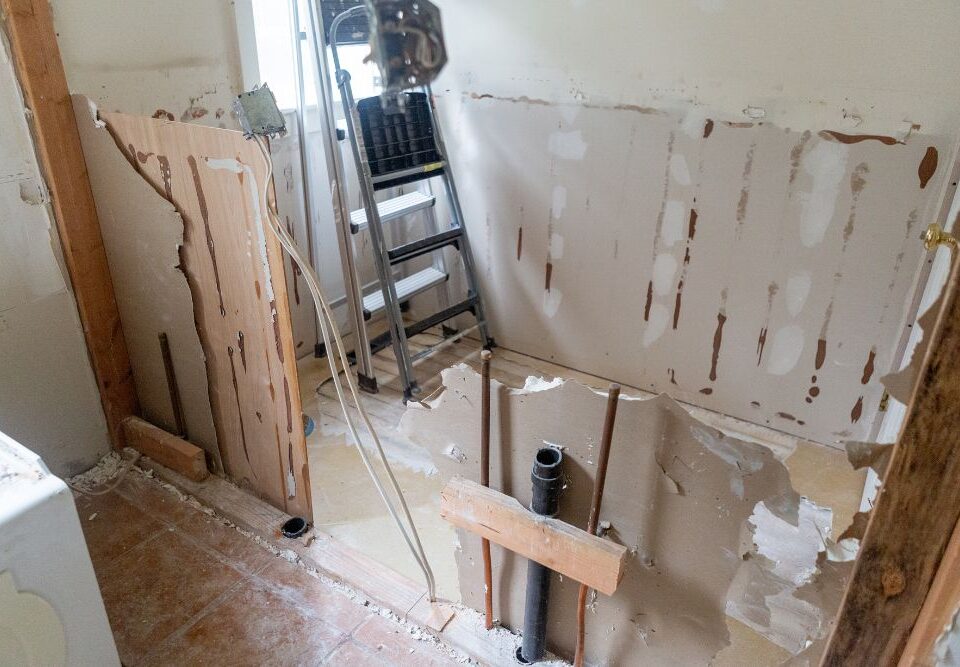
What to Do with Concrete Debris After Removal
September 5, 2025
How to Safely Handle Drywall Removal and Disposal
September 5, 2025How Bathroom Demolition Affects Your Home’s Renovation
Understanding the Impact on Structural Integrity
Bathroom demolition goes beyond simply tearing out tiles and fixtures. Every wall, floor, and plumbing line has a role in the overall structure of your home, and removing them carelessly can trigger issues that ripple throughout the renovation. Subtle damages to studs or water lines can create long-term problems if unnoticed, while improper removal of old materials may compromise the support that surrounding areas rely on. The process requires foresight and precision to ensure that the integrity of your home remains intact and that subsequent work can proceed smoothly. By recognizing how each component interacts, you can anticipate challenges and avoid setbacks that may affect your timeline or budget.
The noise, dust, and debris generated during demolition can also impact other parts of the home if not properly contained. Protecting adjacent rooms and surfaces is essential to prevent accidental damage, while carefully managing waste ensures a cleaner, safer work environment. Beyond the physical effects, a well-planned demolition fosters efficiency and reduces stress, laying a foundation for a seamless renovation experience that maximizes the longevity and aesthetics of the newly remodeled bathroom.
Planning for Efficient Material Removal
When tackling a bathroom demolition, understanding the logistics of material removal is key to maintaining an organized renovation site. Broken tiles, old fixtures, and discarded drywall can pile up quickly, creating hazards and slowing progress. Sorting materials as you remove them can streamline disposal, allowing for easier recycling of metals, plastics, and ceramics. Prioritizing the safe removal of plumbing and electrical components prevents accidents while providing clarity for the next stage of installation.
Strategic planning also minimizes disruption to daily life, particularly if the bathroom is still in partial use or adjacent to living areas. Efficient material removal means you can avoid leaving debris in high-traffic spaces, which contributes to safety and comfort during the renovation. Beyond immediate practicality, having a clear plan for managing waste ensures that no unexpected costs arise from hauling fees or last-minute disposal services, keeping the renovation budget intact while maintaining focus on design and quality.

Preserving Plumbing and Electrical Systems
One of the most delicate aspects of bathroom demolition involves dealing with plumbing and electrical systems. These networks are hidden behind walls and under floors, and any misstep can lead to leaks, shorts, or costly repairs down the line. Careful identification of lines, shut-off points, and connection types ensures that demolition does not inadvertently disrupt the home’s utilities. Protecting these systems requires both knowledge and a methodical approach to dismantling existing fixtures and pipes.
In addition to avoiding damage, maintaining access to plumbing and electrical points allows for efficient upgrades and installations. Properly managed demolition can reveal opportunities to modernize systems, incorporate energy-efficient fixtures, or reroute connections to improve functionality. By respecting these critical infrastructures, homeowners safeguard against future maintenance issues and set the stage for a bathroom renovation that combines beauty, utility, and long-term reliability.
Effects on Home Value and Resale Potential
How a bathroom is demolished can influence the perceived quality of your renovation, which in turn affects home value. A clean, careful demolition signals attention to detail and ensures that surfaces are ready for high-quality finishes. Conversely, sloppy or rushed demolition may leave behind uneven walls, damaged subfloors, or hidden issues that detract from the final product. These imperfections are often noticed during home inspections or by prospective buyers, potentially impacting resale potential.
Beyond immediate aesthetics, well-executed demolition can facilitate upgrades that enhance the marketability of your home. Modernizing layouts, expanding usable space, and properly removing outdated materials all contribute to a bathroom that feels luxurious and functional. By understanding the connection between demolition and long-term value, homeowners can make informed decisions that protect investments and create spaces that are both enjoyable and appealing to future occupants.
Safety Considerations During Demolition
Safety is paramount when dismantling a bathroom, as sharp edges, heavy materials, and electrical hazards pose significant risks. Wearing protective gear, securing loose structures, and carefully handling tools reduces the chance of injury. Awareness of potential asbestos or mold in older homes is equally important, requiring specialized handling and disposal to prevent health complications. Safe practices not only protect workers but also preserve the surrounding environment from inadvertent damage.
Implementing safety protocols also ensures compliance with local regulations and building codes. By addressing hazards proactively, demolition becomes a controlled process rather than a chaotic undertaking. This level of diligence fosters confidence for homeowners and contractors alike, creating a renovation environment where work can proceed without fear of accidents, legal issues, or unplanned delays that could derail the project.
Minimizing Dust and Environmental Impact
Bathroom demolition generates dust, debris, and potentially harmful particles that can spread throughout the home. Containing this impact through barriers, proper ventilation, and cleanup practices is essential for maintaining indoor air quality and preventing long-term damage to furniture and finishes. Additionally, separating recyclable materials from general waste contributes to a more environmentally responsible approach to demolition.
Reducing environmental impact extends to how debris is transported and disposed of. Utilizing responsible disposal services and avoiding landfill overuse ensures that the project aligns with sustainable practices. By approaching demolition with environmental mindfulness, homeowners not only protect their immediate surroundings but also contribute to broader efforts in reducing construction-related waste and pollution.
Managing Unexpected Challenges
Even with meticulous planning, unexpected challenges often arise during bathroom demolition. Hidden water damage, outdated wiring, or structural weaknesses may surface once walls and floors are removed. Recognizing that surprises are part of the process allows homeowners to respond flexibly, adjusting timelines, budgets, and approaches as needed. Maintaining adaptability ensures that these obstacles do not derail the renovation but rather become manageable components of a carefully executed plan.
Documenting conditions and progress throughout demolition can aid in troubleshooting issues quickly. Keeping a detailed record of structural observations, plumbing layouts, and material removal sequences helps contractors anticipate complications and develop solutions efficiently. Proactive management of unforeseen difficulties keeps the renovation on track, preventing costly mistakes and fostering confidence in the overall project outcome.
Preparing for New Installations
Bathroom demolition sets the stage for every subsequent installation, from cabinetry to tile to fixtures. A thorough removal process ensures surfaces are level, plumbing is accessible, and electrical points are correctly positioned. This preparation directly affects the ease and precision of installing new elements, influencing both the aesthetic and functional quality of the finished space.
Attention to installation readiness also saves time and money, reducing the need for adjustments or corrections once new materials arrive. Clear workspaces and organized layouts prevent errors and streamline contractor workflows. By aligning demolition practices with installation requirements, homeowners ensure a smooth transition from old to new, achieving a bathroom renovation that feels deliberate, efficient, and visually appealing.
Cost Implications and Budgeting
The approach to bathroom demolition can have significant cost implications for a renovation. Hiring professionals versus DIY, managing debris removal, and addressing unforeseen repairs all factor into the overall budget. Allocating resources for potential contingencies ensures that financial surprises do not stall the project, while effective planning can reduce unnecessary expenditures and streamline progress.
Transparent budgeting during demolition helps homeowners prioritize high-impact upgrades and avoid overspending on minor fixes. By understanding where costs may accumulate, such as in specialized disposal or structural reinforcement, a strategic approach ensures that the renovation remains financially manageable. Sound financial planning during this phase lays a foundation for a renovation that is both high-quality and cost-conscious.
Psychological and Lifestyle Effects
The disruption caused by bathroom demolition extends beyond physical space, influencing the daily routines and mental comfort of homeowners. Noise, dust, and temporary loss of facilities can create stress, making efficient management crucial. Establishing clear timelines, protective barriers, and organized material handling helps minimize these impacts, allowing homeowners to maintain a sense of normalcy throughout the project.
Acknowledging the lifestyle implications also helps with long-term satisfaction. When demolition is handled thoughtfully, the process feels controlled and purposeful rather than chaotic. Homeowners can anticipate results with confidence, understanding that the temporary inconvenience paves the way for a functional, aesthetically pleasing bathroom that enhances everyday life and overall well-being.
Enhancing Renovation Quality Through Clean Demolition
A meticulous and clean demolition is a precursor to superior renovation quality. By removing materials systematically, protecting underlying structures, and efficiently managing waste, every aspect of the renovation benefits. Clean demolition facilitates precise installations, reduces repair needs, and creates an environment conducive to creativity and craftsmanship for contractors and homeowners alike.
Maintaining order and cleanliness during demolition has ripple effects that touch every stage of the renovation. The improved workflow, reduced errors, and minimized material loss contribute to a bathroom that not only meets functional needs but also achieves aesthetic excellence. Prioritizing a careful, deliberate approach ensures that the end result reflects the investment of time, effort, and resources put into every phase of the renovation.
Conclusion
Bathroom demolition plays a pivotal role in shaping the outcome of any home renovation. Properly executed, it protects structural integrity, preserves essential systems, manages debris effectively, and prepares the space for new installations. A thoughtful approach minimizes unexpected challenges, safeguards home value, and supports the overall efficiency of the renovation process. Attention to safety, environmental responsibility, and clear planning ensures that every phase of the project proceeds smoothly and successfully, reducing stress and enhancing satisfaction.
For homeowners in Santa Rosa, CA seeking expert assistance with debris and waste removal, North Bay Junk Removal provides reliable and professional junk removal services. Their team ensures that all demolition materials are responsibly disposed of, leaving the home ready for the next stage of renovation. By calling 707-478-6817, residents can access a trusted partner dedicated to making the cleanup process seamless, supporting a bathroom remodel that is both efficient and stress-free.



